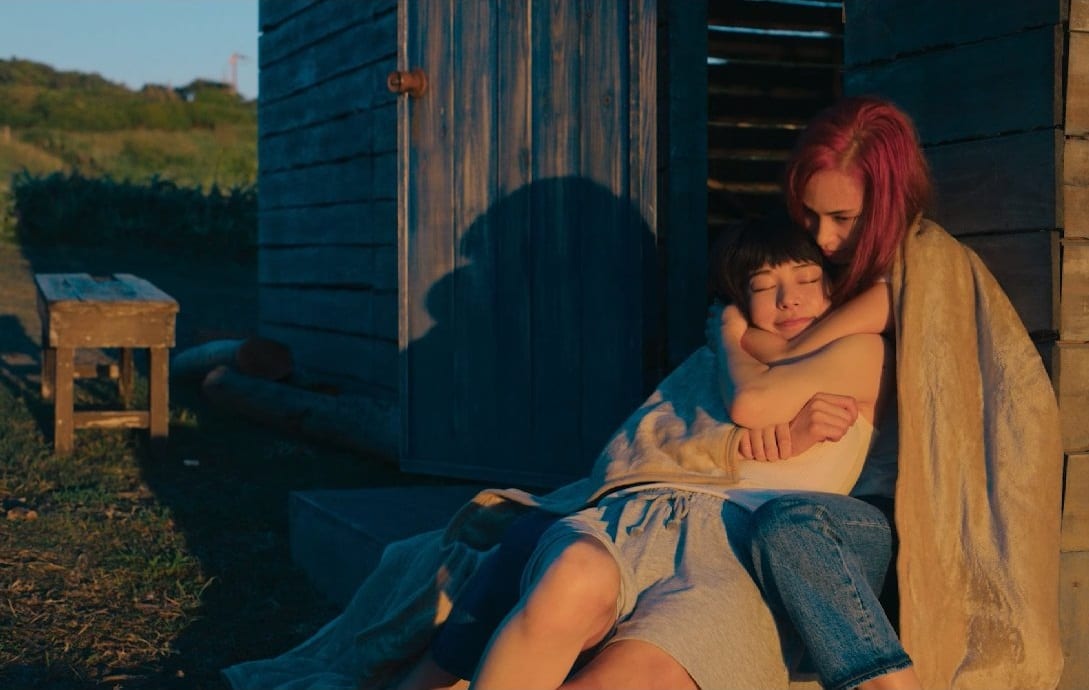Based on Ching Nakamura’s cult manga series Gunjō, Ride or Die sees director Ryūichi Hiroki stick firmly with what he is known for: sexually explicit, troubling, and profound character studies.
Subtlety is rarely a defining characteristic of Hiroki’s work (no prizes for guessing what 2003’s Vibrator is about). His films instead thrive off of intensity and depth. This style is on full display in Ride or Die, intertwining sizable themes like love, death, and retribution into one blood-soaked odyssey. A shame, therefore, that they are counteracted by some unfortunate weaknesses that point to the challenges of such a niche director being set free on a global platform like Netflix.
Rei (Kiko Mizuhara) is a twenty-something woman who learns that her former classmate and crush Nanae (Honami Sato) is in an abusive relationship with her husband. To prove her love to Nanae, and to get revenge on the man who is hurting her, she lures him to a hotel bedroom and murders him. Rei is ready to live with the consequences and the blame as long as it proves her love to Nanae, who is disgusted with her actions. The conflict and love between the two boils over as the pair go on the run from the law.
The trailer gives the misleading impression that this is a Thelma and Louise-esque empowering getaway movie, which isn’t really the case. The way that it explores LGBTQ+ love in a way that is rife with opposition and even hostility feels more akin to Blue is the Warmest Colour (which—like Ride or Die—was directed by a man, and one whose privileged position feels impossible to ignore here too). Similarly to Blue, the entire storyline of Ride or Die centres around its two protagonists, their love rendered unsustainable as their differences threaten to overwhelm their attraction. It is a chaotic, troubled, and deeply passionate relationship captured with class by Mizuhara and Sato. The former in particular manages to swap between apparent apathy and raw emotion in a way that feels startlingly real, Rei’s indecision and instability never far from the surface.
Cinematographer Tadashi Kuwabara is as comfortable capturing sun-soaked open roads as he is the neon-infested cityscape of Tokyo, the entire film shot with an often grand sense of scale and with impressive visual clarity. This clarity however does not extend to the film’s tone, which feels at odds with itself and represents a definite divergence from Nakamura’s original manga series. When at times you expect sombreness and weighted introspection, instead you get smiles, laughter, and a surprisingly chipper soundtrack that completely throws you off. This would be forgivable if the film was more tightly packed, but at 140 minutes it is at least half an hour too long. Ride or Die too often feels not exciting or powerful, but laborious, just about managing to get some semblance of continuity before spoiling it with another misguided turn of frivolity.
Ride or Die varies between breathtakingly stylish and unusually quiet, perhaps trying too hard to make the story more appealing to a mass audience. Yet just when it seems like you have been irreversibly lost, a heated argument is all that is needed to convince you to stick with it. The role that death and passion play in everyday existence are explored with unyielding commitment, most of all from the film’s two stellar leads.
The Verdict
Powered by heated conflict and occasional moments of grace amidst the chaos, Hiroki’s violent romance is about as messy and self-victimising as the love that it brings to the screen.
Rating: 6/10
Words by James Hanton
Support The Indiependent
We’re trying to raise £200 a month to help cover our operational costs. This includes our ‘Writer of the Month’ awards, where we recognise the amazing work produced by our contributor team. If you’ve enjoyed reading our site, we’d really appreciate it if you could donate to The Indiependent. Whether you can give £1 or £10, you’d be making a huge difference to our small team.
